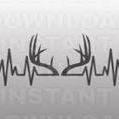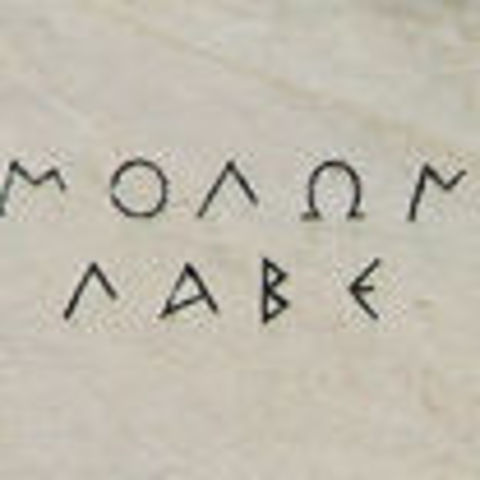Search the Community
Showing results for tags 'rectifier'.
Found 5 results
-
So I have a Honda gx390 OHV engine in one of my Sears Suburban's which runs great and has cut my lawn for at least 5 years, it has electric and pull start. The engine was installed by the PO as was the wiring. Since I have owned it, it has never charged correctly. It has two wires coming from the engine one black and one brown... The black is currently connect back to the B+ through a small 1 inch plastic connector that has the symbol for a Diode on it I suspected that this is the juice back to the battery don't know if this is also some sort of rectifier (very small like one inch X one inch plastic) I took the voltage reading off this and it was a very low reading ….. like 2.5 volts DC. The other brown wire to me was more like it this wire is just hanging not connected voltage measured 27-32 volt AC.... Both wires have the same push-on connector and I seriously considered switching the wires (connecting the hanging 27-32 volt AC to the Diode and see what happens but I didn't have the courage to do it). Questions : Could I install a new circuit using a external rectifier to the 27 volt AC drop? Note there is only ONE wire from the stator putting out the 27 volts DC all the Wheel Horse rectifiers I have seen have TWO wires and a B+ tab. Would you try connecting the hot AC volt line to the current Diode/Rectifier? Could doing this take out the Diode, also If yes and this provides DC output how would I control the amount of charge to the battery. Do they make ONE wire (AC input Rectifiers) ? Lots of questions I really need to solve this problem so that the battery stays charged and I can use the starter. Thanks in advance
-
Hi, I need to replace the voltage rectifier on a 520H. So I ordered the following replacement part: "New Rectifier Regulator for Onan P-Series Alternators 16 17 18 19 20HP Engines 20 Amp Rating 191-1748, 191-2106, 191-2208, 191-2227 by Crank-n-Charge" This new rectifier has 3 male spade connectors, yet on the tractor I have voltage rectifier with 4 spade connectors. I've attached a picture of the current rectifier. Can I use this new rectifier and assume I can wire the white and grey wires together? Or is this currently installed rectifier something special since it has 4 spade connectors and the two wires need to be independent of each other? Thank you for helping me out. Regards, Kevin
- 4 replies
-
- rectifier
- voltage rectifier
-
(and 1 more)
Tagged with:
-
While I've got my GT 14 up on floor stands....at the back end anyway......attempting to deal with some very stuck wheel hubs, I'm looking around for other things which could use some attention. Given the time of year, its the perfect situation to give some areas that may have been neglected or even half-assed to work when things were of a more pressing nature during mowing season. Let's see.......rear axle seals, a change of tranny fluid and filter, belts perhaps..........oh yeah.......lest I forget that nagging rectifier I've had some trouble with last spring when the battery wouldn't charge and the electric clutch refused to work because of low voltage. I discovered one of the three rectifier male spades about 2/3rds broken off and the wire connecting it dangling in thin air. Yeah, that's definitely too long an arc to jump voltage across, be it AC or DC. I fiddled with trying to get the spade to accept a female terminal.......but there just wasn't enough "meat" left for the connection to work. As usual, I was pressed to get the yard done, and didn't take the time to research and seek out a new replacement rectifier. Somehow I managed to solder the wire lead to what little was left of the spade.......and remarkably it held all season. Amazing. Anyway, I need to address this problem permanently and replace the rectifier and the terminal leads which attach to it. Nothing in any of the WH literature I have gives the slightest clue about a rectifier specifically......not in diagram, not in the parts list......and nowhere else have I read what that part is and how to identify a replacement. One would almost assume there isn't one from researching literature. But we all at least causally know, that's not true. You gotta have a rectifier to charge that battery or you won't be running very long. My only minor hint in the owner's manual comes from the electrical info listed on page 5 under Specifications. The following info is given: "Changing System: 10 Amp. Alternator w/Solid State Regulator" So, I'm going to assume, the GT 14 originally came equipped with a 10 amp rectifier. Seems reasonable and I'm relatively sure the one on the tractor is probably the original. At some point during the 35 years I have had this tractor, the original 14 hp Kohler and its integral connecting rod decided to leave the building, so to speak. End result: destroyed block and crank. Remedy: a new 16 hp Kohler K341 installed. Hooked up to the same original rectifier. Ran like a charm for years.......until a spade gives up a significant portion of its length. Fast forward to 2/5/16: What do I replace the ailing rectifier with? 10 amp? 15amp? another rating? What brand? From whom? Anything special or noteworthy to be aware of in my quest? I'm wandering and babbling a bit, but if anyone here can help lead me to the Promised Land of Replacement Rectifiers, I would be most grateful and appreciative. Steve
-
I have a 1969 GT 14, 1-7741, which originally had a K321 14 hp engine that gave up the ghost. That was replaced with a K341 16 hp engine. The original rectifier was used when the new K341 was installed and performed fine. I am now in need of a new rectifier because of broken male spade. How can I identify the proper rectifier to match with a Kohler engine (in my case for a K321 or a K341), and what resource can I research to obtain that information? Regards, Steve
-
Hoping for some help, advice, anything to make my months-long mission to get my 520-H running a success story. Inherited the tractor from the previous owner of my home. He rarely used it -- preferred his zero-turn -- and advised that I always keep it on the float charger when not in use. I used it for one month's worth of cuts last summer, and then began having problems. At first, the engine was surging. It would fluctuate from high to low rpm with the choke off. However, if I played with the choke (thereby getting way too much fuel and oil into my system), it would run for at least the rest of that cut. After having to keep it running with the choke, it eventually stopped turning over AT ALL. I did the general maintenance: changed both plugs, dropped the oil, drained the fuel, replaced the fuel filter, removed all of the visible (and accessible) electrical connections and cleaned them up. Bought a new battery as well, and the tractor started right up. Sounded better than ever. For one cut. By the end of the cut, I had to start messing with the choke again to keep it running. So, I cleaned the carb, replaced the fuel filter (because it was making a strange knocking sound), cleaned the (new-ish) plugs, bench tested the solenoid, changed the solenoid. When I connected the battery and went to start, I got (what sounded like) very little power to the starter. Loud clicking/rattling sounds ensued, so I brought the batt to Autozone to check the juice. It was at 50%, and it was only one month old. They charged it, and when I reconnected the batt...nada. Nothing. The same old clicking, metal-thrashing-like sound/s. I've tried to jump the solenoid directly -- same result. I've bypassed the solenoid and put all connections directly to the starter -- same result. I've downloaded as many Wheel Horse PDFs as I could find, including the demys guide. Now, I'm thinking about the regulator. Thinking about it as it sits in front of my laptop. It's an Onan 14v 20a. Two ACs and one B+ connections. I'm really hoping it's not the stator and/or the starter. So, any advice on how I should proceed would be greatly appreciated. I have experience with small engines from my years taking apart and racing dirt bikes, but things are just a bit more challenging to access with this beast. But, from EVERYTHING that I have read/heard, a working/running WH will be well worth all of my effort. Sorry for the long post. I am an English teacher : ) -O
- 11 replies
-
- 520h
- electrical
-
(and 7 more)
Tagged with:





